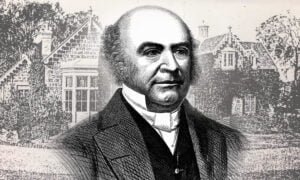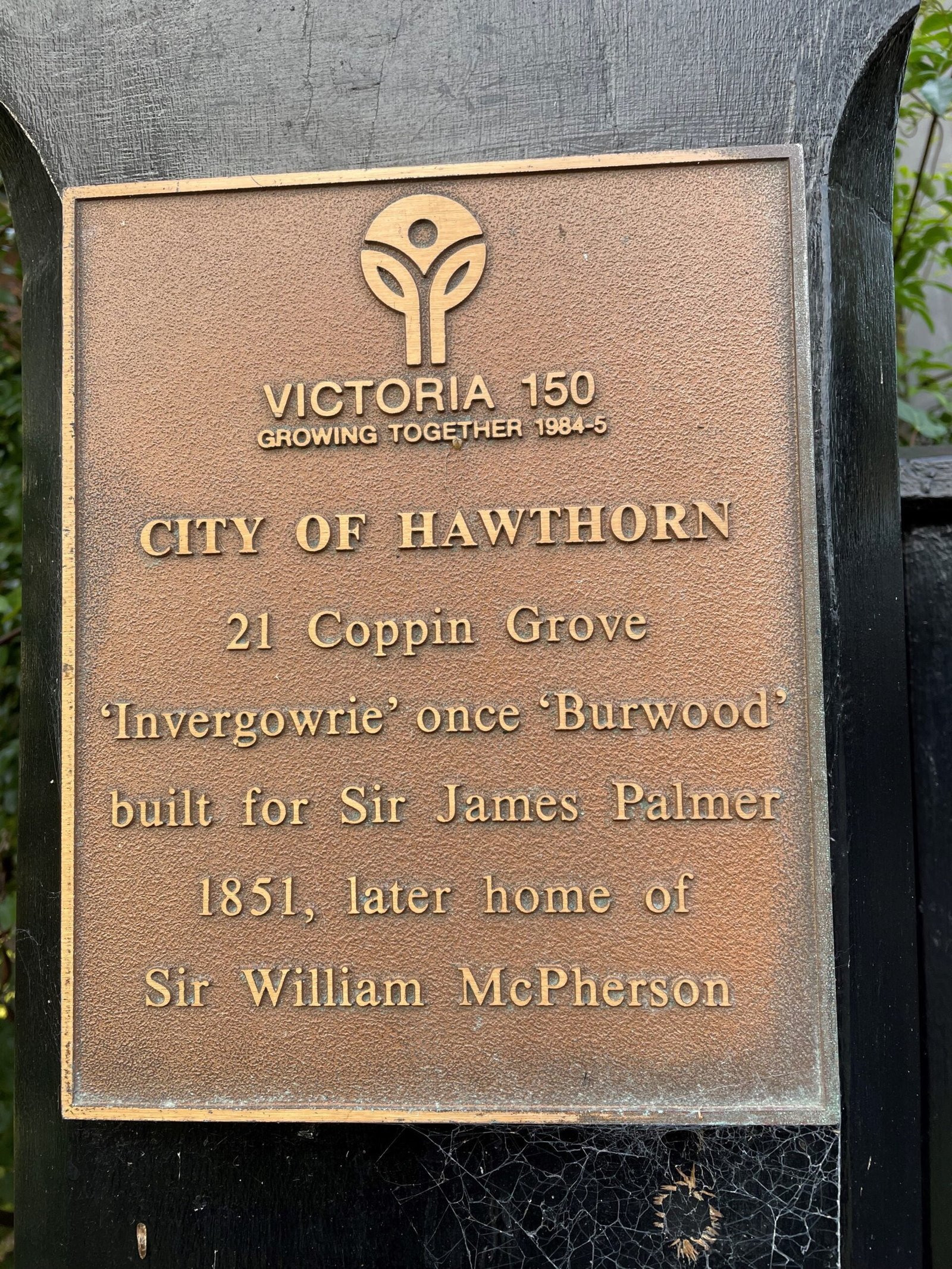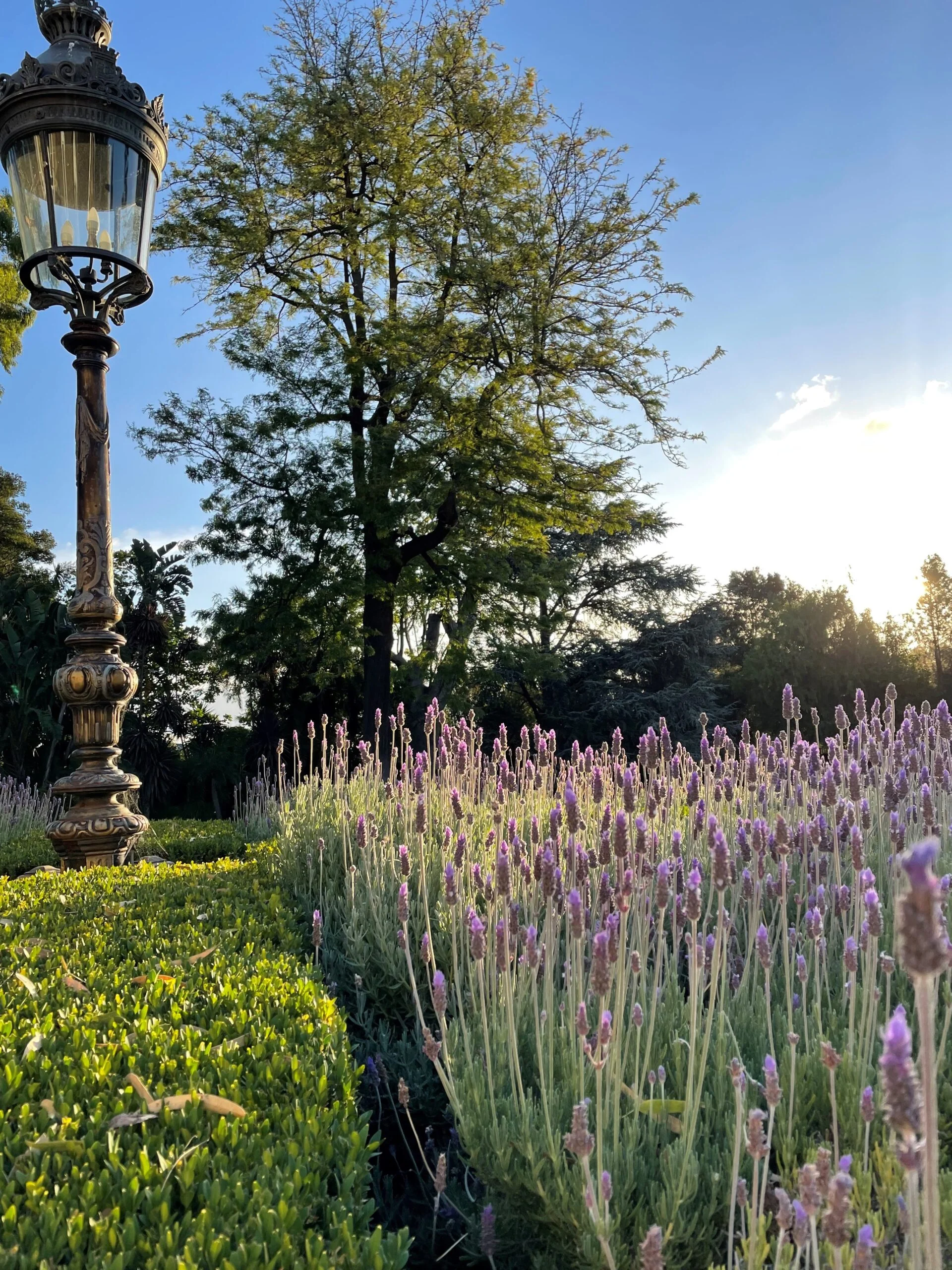
Welcome to Invergowrie, a unique and highly significant pre-1851 inner Melbourne home with a profound influence on the past, present, and future. Pre-dating Victoria’s separation from NSW and the gold rush, it stands as a witness to history, existing 40 years before electricity and the arrival of motor vehicles in Melbourne.
More than historic buildings, Invergowrie is a living legacy shaped by those who lived, met, worked, and gathered here over two centuries. Their impact extends beyond the property influencing the development of Melbourne, the State of Victoria, and its people.
Our home, is your history.

At Invergowrie, the lingering traces of the local Indigenous community weave a tale of a time long before European settlers arrived. The Wurundjeri people, the traditional custodians of this land, once thrived here until 1837 when the first Europeans established their presence.

As you stroll across the front lawn, your eyes are drawn to the Canoe tree, standing as a silent witness to history. Its bark bears the scars of a bygone era, likely stripped away to craft canoes for the nearby Yarra River. Although the tree has long since passed, its presence tells a story that spans more than 250 years, marking a connection to a rich Indigenous heritage that endures at Invergowrie today.
Sir James Palmer was a distinguished figure, who played a key role in the early days of the Melbourne City Council and ascended to the position of Melbourne’s Mayor in 1845. That very year, he acquired the Invergowrie property, and began construction of the main house – which he named Burwood.
When Victoria became a separate colony in 1851, Palmer was elected President of the Legislative Counsel and continued in that position until 1870. Early sources point to many of the first meetings being held in the dining room at Invergowrie. Many of the historic features of that room remain today.
Palmer took much interest in the Melbourne Hospital, of which he was president for 26 years. He also became the president of the national board of education. Little would he know that his early support of women would be a legacy that entwine through Invergowrie to the present day.

He was knighted in 1857 and died at Invergowrie in 1871.
Convict Labour
If you look closely, you will discover the distinctive “broad arrow” marks, possibly emblematic of the use of convict labor in the 1840s for quarrying bluestone. The original segments of Invergowrie were built between 1850 and 1857, a time when brickworks in Melbourne were still 15-20 years away from being established.
The Belfry
In its original form, Invergowrie occupied almost 47 acres, stretching from the Yarra River to Burwood Road and Yarra Street. While not confirmed, there is suggestion that Sir James Palmer constructed The Belfry to call workers in the fields for lunch and dinner. Remarkably, it remains in working condition today.
The Palmer Dining Room
This room preserves many of its original 1857 features, such as the fireplace, panelling, and the double-height cedar-lined ceiling. There are historical accounts to support that this space hosted early meetings of the Legislative Council during the formation of the colony of Victoria.
The Stables
The structure at the far eastern boundary, initially built as stables in the early 1850s, has undergone extensive renovations. Now serving as a multifunctional space, it features a foyer, meeting rooms, and office facilities. This transformation allows Invergowrie to welcome visitors and groups by invitation.
1856 Sketch
During her mainland tour in 1856, the acclaimed Tasmanian artist Louisa Anne Meredith visited, documenting the early history of Australia through her sketches including Invergowrie. Surveyor markers along the southern boundary align with her original viewpoint, allowing present-day visitors to experience the same perspective.
A bronze plaque at the Melbourne Theatre Company commemorates George Coppin’s influence on Theatre in Victoria. At Invergowrie, his influence there is best represented by the streets around it. Coppin Grove at the front of Invergowrie, Isabella Grove named after Sir James Palmer’s wife, and Shakespeare Grove, plays homage to his love of the theatre, to its rear.

George was responsible for subdividing the 47 acres of Burwood as it was known to 73 new allotments which became St James Park as it remains today.
Ownership passed to Alfred Dean in 1881 and the property was renamed Amoe. After living there just a few years he let the property to the Reverend Dr Charles Strong who was the first minister of the Australian Ministry Church.
Joseph Reed, a well-known Melbourne architect was a tenant at Invergowrie from 1887 until his death in 1890. Such was his love of Amoe, his funeral departed from this site. His projects included the State Library of Victoria, the Royal Exhibition Building, Geelong City Hall, Melbourne Town Hall, and the Rippon Lea Estate.

In the early 1900s the property had deteriorated significantly and was to be offered at auction in 1908 for likely demolition and further sub-division. It was however, salvaged by an eleventh-hour intervention by William McPherson who had lived there in the late 1890s. He named the property “Invergowrie”.

McPherson was knighted in 1923 and became the 31st Premier of Victoria from 1928 to 1929.
He was a supporter and advocate of women’s health and education; he founded the Emily McPherson School of Domestic Economy (RMIT) named after his wife and funded the building of the Jessie McPherson section (named after his mother) of the now demolished Queen Victoria Hospital.
In 1933 Invergowrie was presented to the Headmistresses’ Association for use as the Homecraft Hostel – the first of its kind domestic training facility. During its time more than 2000 students – many living on site – graduated before the Hostel closed in 1973 marking a period of dormancy for Invergrowrie. The significance of this era on women’s education is indelible, with a plaque acknowledging Margaret Kirkhope, the principal of the hostel from 1938 to 1967, and the May Weatherly Memorial Hall 1957 which commemorates the first Principal of the Homecraft Hostel.

A further plaque sits in the middle of the lawn at Invergowrie marking the spot where Mrs McPherson, the daughter in law of the Sir William McPherson had planted a tree. The tree is long gone but it remains an important acknowledgement of this era at Invergowrie.
From 1974 to 1989 Invergrowrie was occupied by the State College of Victoria as an administration site.
In 1989 the Association of Heads of Independent Girls Schools decided to sell the property. Just as her grandfather had done back in 1908, Mrs Barbara Hamer challenged the proposal. This time the McPherson family failed in their intervention with the property going back into private hands in 1990.
The $5.25M raised through the sale was however used for good, to fund the Invergowrie Foundation with a primary focus to promote and advance the education of girls and women in the State of Victoria.
Barbara became an active member of the Foundation until her passing in 2020.

Invergowrie transferred to private ownership nearly 30 years before it entered this current era.


In 2021, the Tomisich family purchased Invergowrie as a generational home with a commitment to preserving and enhancing history, as well as to create a future of giving, connecting, and celebrating the significance of Invergowrie today. Like many of the earlier custodians of time at Invergowrie, the Tomisich family are givers.
They have opened the gates to Invergowrie to schools, and the past students of Homecraft Hostel; they have re-established and united the link between the property and the Invergrowrie Foundation, and they have established their own foundation The Tomisich Foundation to support women, children’s education and Australian heritage.









